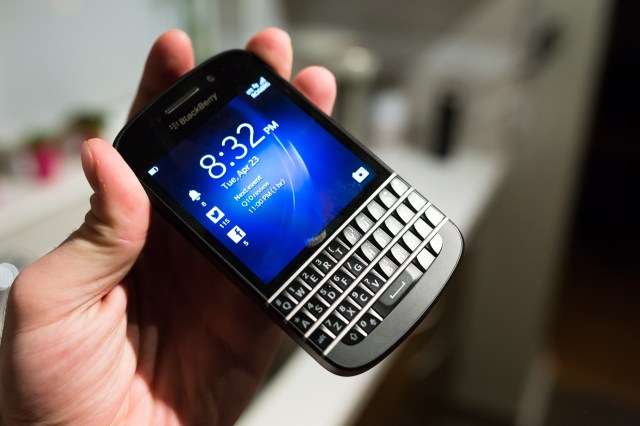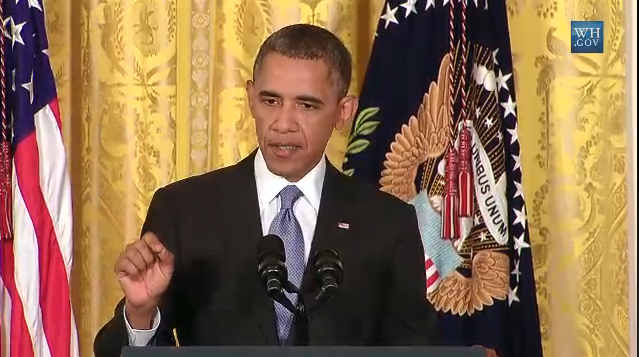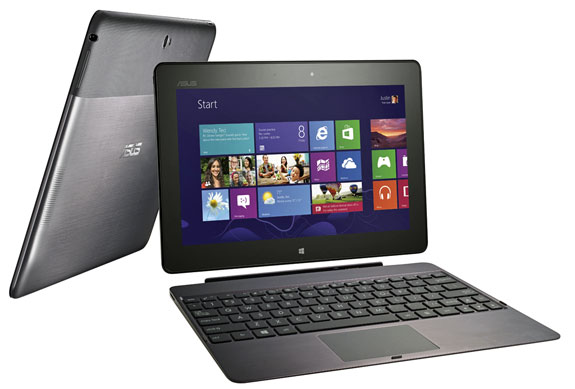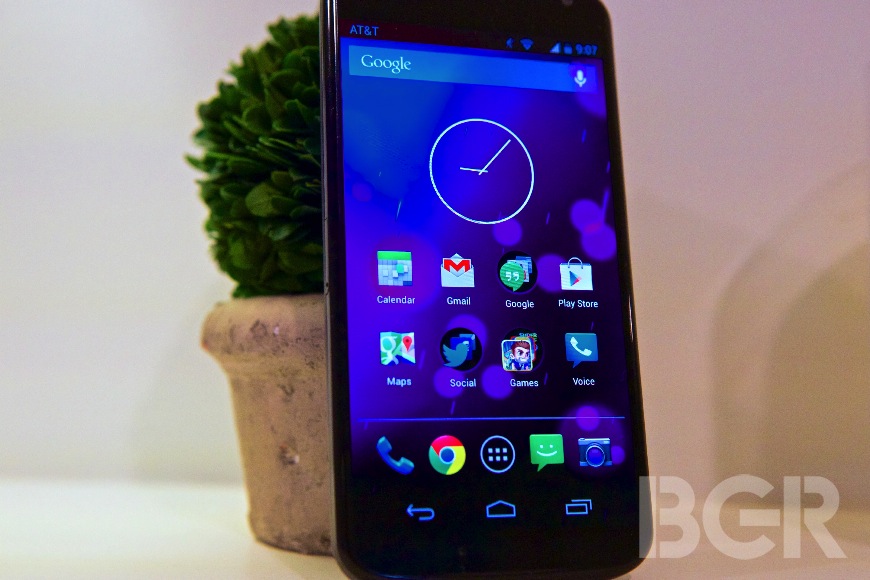Speaking of the display, it’s a 4.7-inch panel that features a 720p HD resolution, and is the best looking display ever to come out of Motorola. While it looks overly saturated and bright because it’s an AMOLED screen, the screen does look sharp and clear, with a 316 ppi that makes text look beautiful.
Diving deeper, the phone itself is powered by a system on a chip Motorola is calling the Motorola X8 Mobile Computing System — basically there’s the phone’s processor, a Qualcomm dual-core 1.7GHz Snapdragon S4, a quad-core graphics processor, a natural language processor that powers Touchless Control, and a contextual computing processor that powers Active Display and other always-listening gestures like quick photo capture that we will get into later.
The X ships with Android 4.2.2, 16GB of storage, 2GB of RAM, a 2,200 mAh battery, NFC, Miracast wireless display and Bluetooth 4.0.
There are three microphones on the Moto X to help with Touchless Control, but also to provide great noise cancellation with Motorola’s Crystal Talk feature, and they all work together exceptionally well. Talking on the phone sounds impeccably good in a wide variety of different environments, to both me and the people who I spoke to. Finally, a phone that works great as a phone.
Switching to the speakerphone, which is loud — super loud — and also clear, there is a reason why. Motorola says that the Moto X measures the temperature and movement of the speaker membrane to enable more than 5 times the sound power of other speakerphones while ensuring the speaker doesn’t blow out.
The X also features something Motorola has been doing for a bit, and that’s a water-repellant coating that extends to the electrical boards inside the phone, giving you some leeway if you accidentally drop your phone into water or splash it with a drink. Wi-Fi 802.11ac, the latest Wi-Fi technology, is built-in for absolutely insane WI-Fi performance, and so is more 802.11n performance with a second amplifier.
.
Moving on to the battery, this is easily the best performing Android device I have ever used in this regard, not counting something like the Motorola Maxx. It lasts for days on standby, even with Active Display running, and it easily powers through one whole day of non-stop usage. It’s downright impressive.
One of the main features of the Moto X that isn’t available on any other phone in the world is something Motorola calls Touchless Control. It’s something Edward Snowden warned us about — there’s someone listening to everything you say on your phone, except in this case it’s actually your phone and not the government.
After quickly learning your voice, all you have to do is say “OK Google Now” followed by an action, and even if your phone has the display off or if you are not directly in front of it, the Moto X will wake up and respond to what you say. It’s incredibly useful in situations where you can’t access or look at your phone, like driving for instance. Just say “OK Google Now navigate to 1 Broadway Avenue,” and off you go.
You can ask a lot of different types of questions and if the phone isn’t able to deliver, it will serve up a Google search result as a back-up which obviously works quite well. Touchless Control can call contacts, check the weather, get navigation directions, serve up sports scores or information on people, give you the time, and set reminders.
Unfortunately almost everything you can ask your phone to do is one way, unlike Apple’s Siri, however. There’s no way to get unread messages read to you, send emails, make calendar appointments, text friends, book restaurant reservations at restaurants, tweet, or post to Facebook.
In my testing, Touchless Control worked great, often reacting to what I said even from across the room without a hitch. The one hiccup is that since I have a passcode on my phone, I can’t actually get anything back from the X until I enter my passcode and unlock it, except to make outbound calls.
One way around this, which is absolutely brilliant, is the ability to trust specific devices. Since your car’s built-in Bluetooth is paired to your phone, and since your phone is in the car, there’s a reasonably good chance you are in the car with your phone connected to Bluetooth. By allowing trusted devices, you don’t need to enter your passcode to unlock your phone as long as you are connected to that device. This way, when you’re in the car you can completely control the Moto X without ever having to unlock it or touch it.
Have you ever pulled your phone out from your pocket or taken it out of your purse to check the time, or to see if you have any missed notifications? No? Please leave now then. According to Motorola’s research, we do this an average of about 60 times a day and each time you need to wake up your phone — or even worse, if there are unread notifications you need to unlock your phone and then go into the app to check the message.
Active Display lets you see your notifications on the lock screen, but also allows you to jump directly into the most important one, for instance, a text message. You can read a preview of the text message by sliding your finger up on the lock screen, and you can go directly into that text message conversation if you’d like to reply, with just one more tap.
Another feature of Active Display is the… active display. Even when your phone is locked, the screen will still show the time and any notification icons in a pulsing animation every few minutes. Motorola is able to do this because of the type of screen that’s used in the Moto X, and it only uses a fraction of energy compared to if this was done on other phones.
Android’s camera app has never been the best designed or most useful to me, but with the enhancements Motorola added on top of it, it’s surprisingly good. One problem Motorola sought to solve was the fact that it takes too long to get your phone out of your pocket or bag, unlock it, get into the camera app and take the picture.
Using a gesture where you turn the phone front to back twice, the camera app will automatically launch. On top of this is a new full-screen capture button so you can tap anywhere on the screen to take the photo instead of having to find the on-screen shutter button. One drawback of this feature is that the phone will then determine where to focus instead of focusing where you tap, like on other smartphones. This is probably not the worst thing for most people, but I quickly changed it to allow me to tap to focus.
There are other automatic features that should help the average smartphone user like an automatic HDR mode and automatic flash. Motorola told me that practically no one goes into their camera settings, which I agree with, so it’s great that the camera app is set perfectly for the majority of people who are going to buy the phone.
Two more enhancements to the normal Android camera app are a nice slide-in settings wheel so you can, if you wish, quickly access different camera modes and settings by swiping in from the edge of the phone, and also the ability to quickly see the last pictures you took by swiping to the left.
As far as actual photo quality, there’s a 10-megapixel camera that features something Motorola calls Clear Pixel technology that captures up to 75% more light to provide less blurry photos during the day and night. In my tests, I didn’t find the camera to be quite as amazing as Motorola made it out to be, and overall not as good as my iPhone 5. It’s not a bad camera by any means and it’s nice to see companies like Motorola and HTC pushing camera technology forward on Android smartphones. You can also capture 1080p HD video on the Moto X as well as high-quality slow motion video in 720p resolution. The front-facing camera is a 2-megapixel sensor that allows 1080p video capture of god-knows-whatstagram.
The most amazing thing to come out of Motorola in the last couple years has probably been Smart Actions. This app allowed you to customize your phone to do quite a number of different actions based on many types of situations. For instance, you could set it to automatically switch Bluetooth on when you leave your house and turn it off when you get home, or start to dim your display more drastically when your battery is below 50% to save energy and extend your battery life. Smart Actions could even turn your phone to vibrate-only mode whenever you walked into the office.
Awesome, right? Well it’s not available on the Moto X.
While Smart Actions isn’t on here, there are three unique features Motorola offers that are fantastic. Since Android is a mess and there is no centralized way to back up your device or restore it to another (don’t start with me, I’m not in the mood nor do I care about how you can but you can’t if the phone is stock Android but your next one isn’t but some of your apps restore but your app data doesn’t but it’s open), Motorola Migrate is a nice tool to help solve that. All you need to do is install the Migrate app on your existing Android smartphone and tap on the Migrate app on your Moto X. You then scan a code using the camera and all of your data starts transferring over, including photos, videos, contacts, call history, text messages and more.
Motorola Connect is another feature that is most likely life-changing for many people, and it offers the ability to see your incoming, outgoing, missed calls, and text messages on your computer. You can even respond to text messages from your computer from anywhere you are, no matter where your phone is. This is big, and yes there are solutions for this already including Google Voice, but an integrated feature in a phone right out of the box is great for the average consumer. To use Motorola Connect, you just download a Google Chrome extension on Mac or PC and you’re off — it works extremely well.

The last of the bunch is Motorola Assist, and while it has some of the spice of Smart Actions, it lacks all of the heat. More focused on daily tasks, Motorola Assist can preemptively start listening to certain phrases when the phone senses you are driving to help you keep yours eyes on the road. The phone can then read incoming messages to you and quickly reply with a preset response, or tell you who is calling and also allow you to start and stop music playback. If you’re in a meeting, the phone can silence your ringer during a calendar appointment automatically, and also instantly reply to incoming callers letting them know you’re busy. The last part of Assist is a nighttime mode or do not disturb setting that silences your phone’s ringer for a preset length of time.
Motorola’s final piece of the Moto X puzzle is a service called Moto Maker. Google Chairman Eric Schmidt explained how the company has completely overhauled its supply chain and opened a U.S. factory to produce Moto X in Texas. It’s the first modern smartphone to be assembled in the U.S. but one reason the company is doing this is because of the new customization options Motorola is offering.
Buyers are able to customize the phone in tens of thousands of ways, including black or white front covers, 18 different back covers, seven accent colors for the phone’s buttons and hardware around the camera, custom messaging on the back of the phone, unique wallpapers, and even a custom welcome message when you power your phone on. Despite all these customizations, Motorola will deliver your phone in under four days. The company also offers color-matched accessories from SOL Republic like headphones, wireless speakers, and cases from other manufacturers.
Something I was surprised Motorola didn’t mention in its messaging is the fact that the Motorola RAZR was practically the phone that started the entire color craze, launching a black model after the aluminum one in the U.S. and then, obviously, in a bunch of colors soon after. But now that I think about it, yeah, let’s not talk about the RAZR
The Motorola Moto X is not the fastest phone in the world. It’s also not the most cutting-edge, it doesn’t feature the biggest display, and it isn’t the thinnest Android phone. However, there is absolutely no doubt that the Moto X is the most amazing Android phone I have ever used, and I think most people will agree.
Motorola’s new hero phone offers up the most seamless and integrated Android experience on the market, and it does this without changing the core Android experience practically at all. It is a mainstream, consumer-focused, $199.99 mass-market phone. One that can appeal to young kids, teenagers, professionals, men, women, and everyone else. There are truly great, well thought out features, that together make this phone a bona fide smash, and it really is Android’s iPhone.
It’s great to see Motorola back..







































